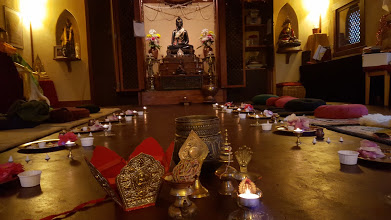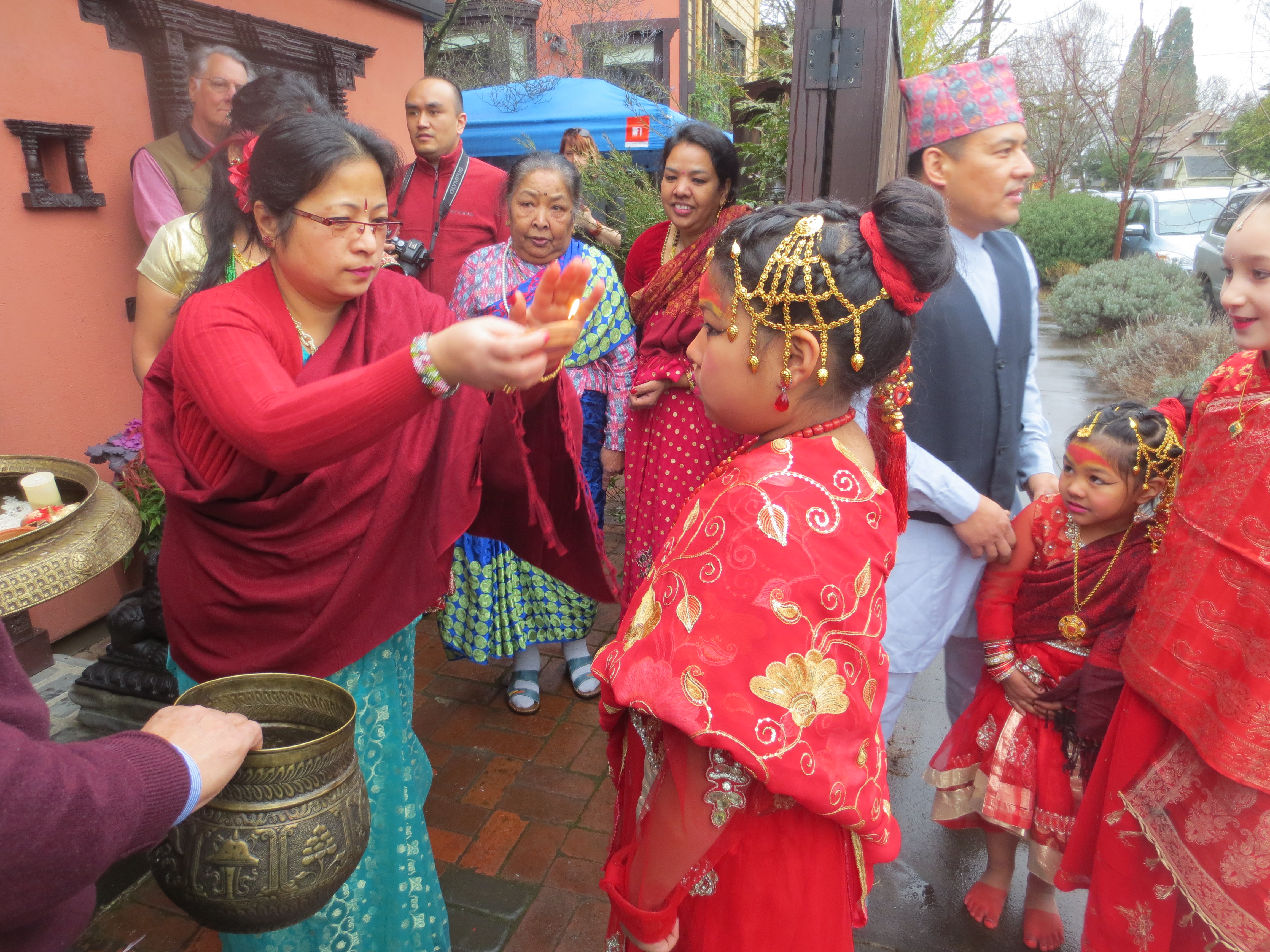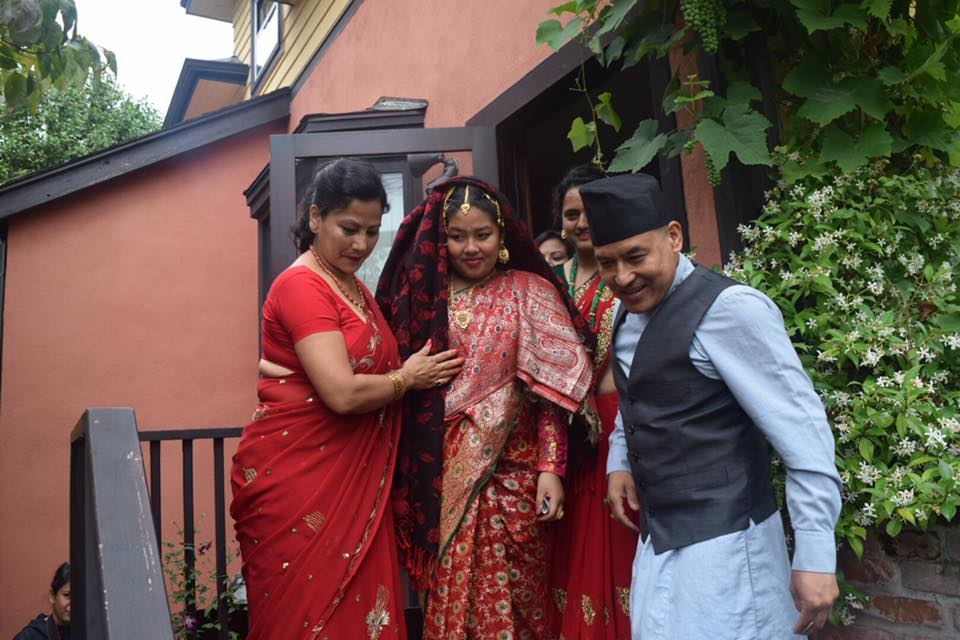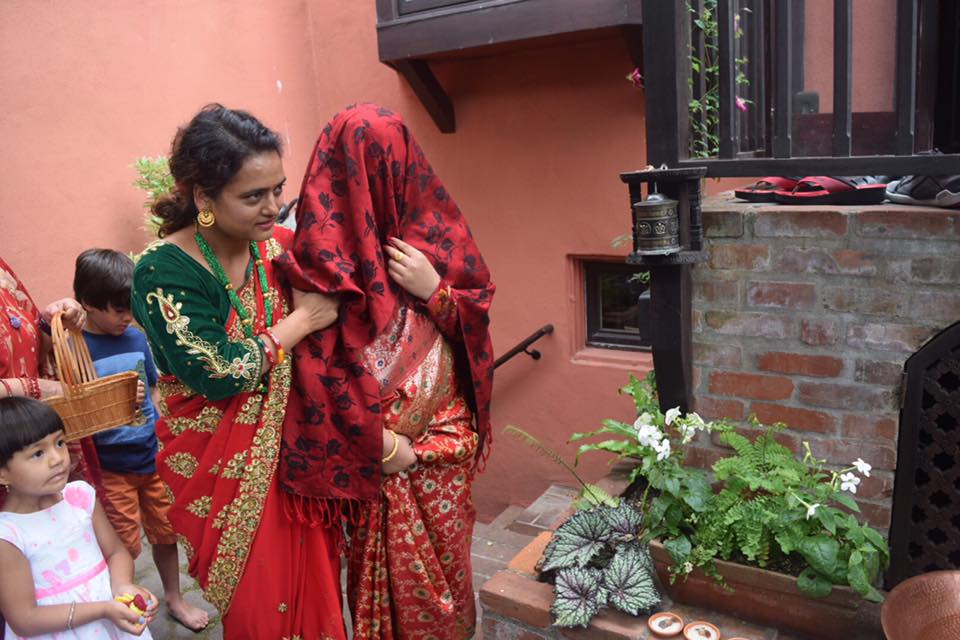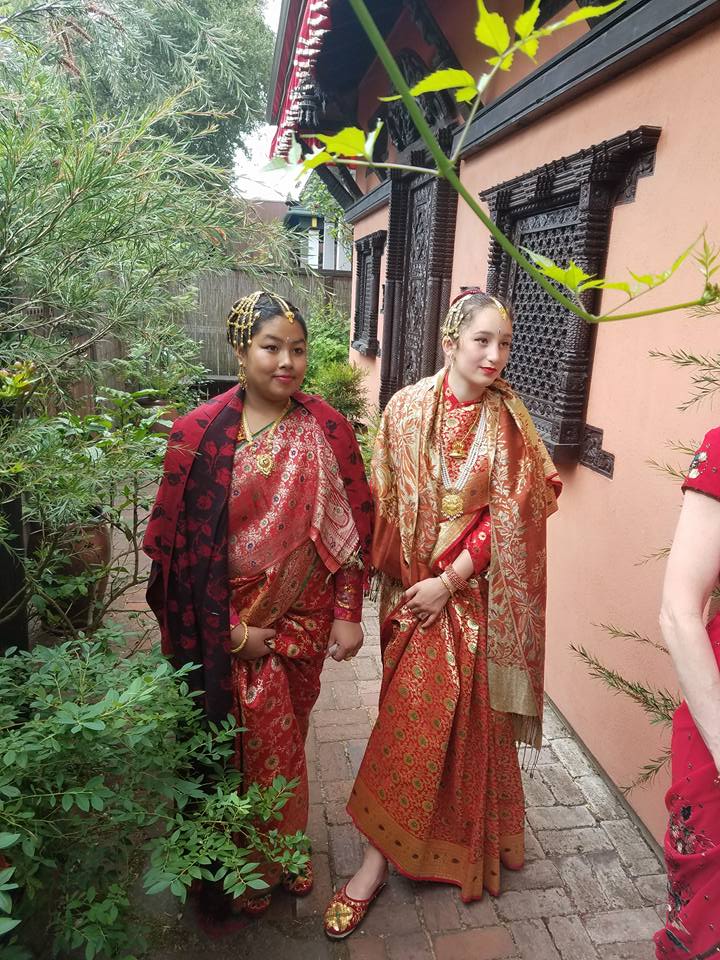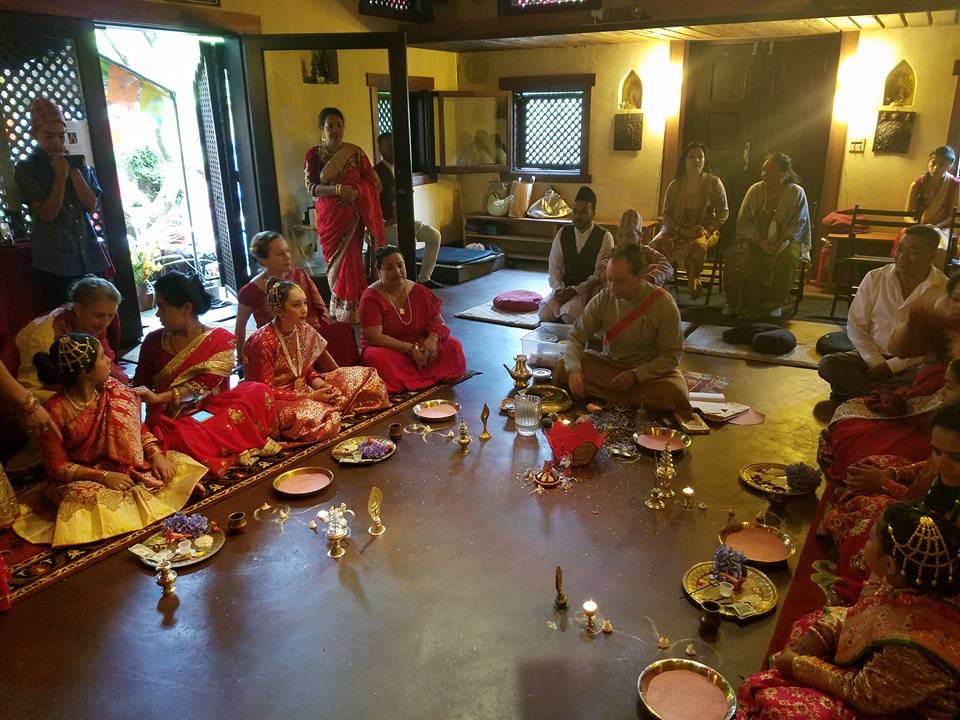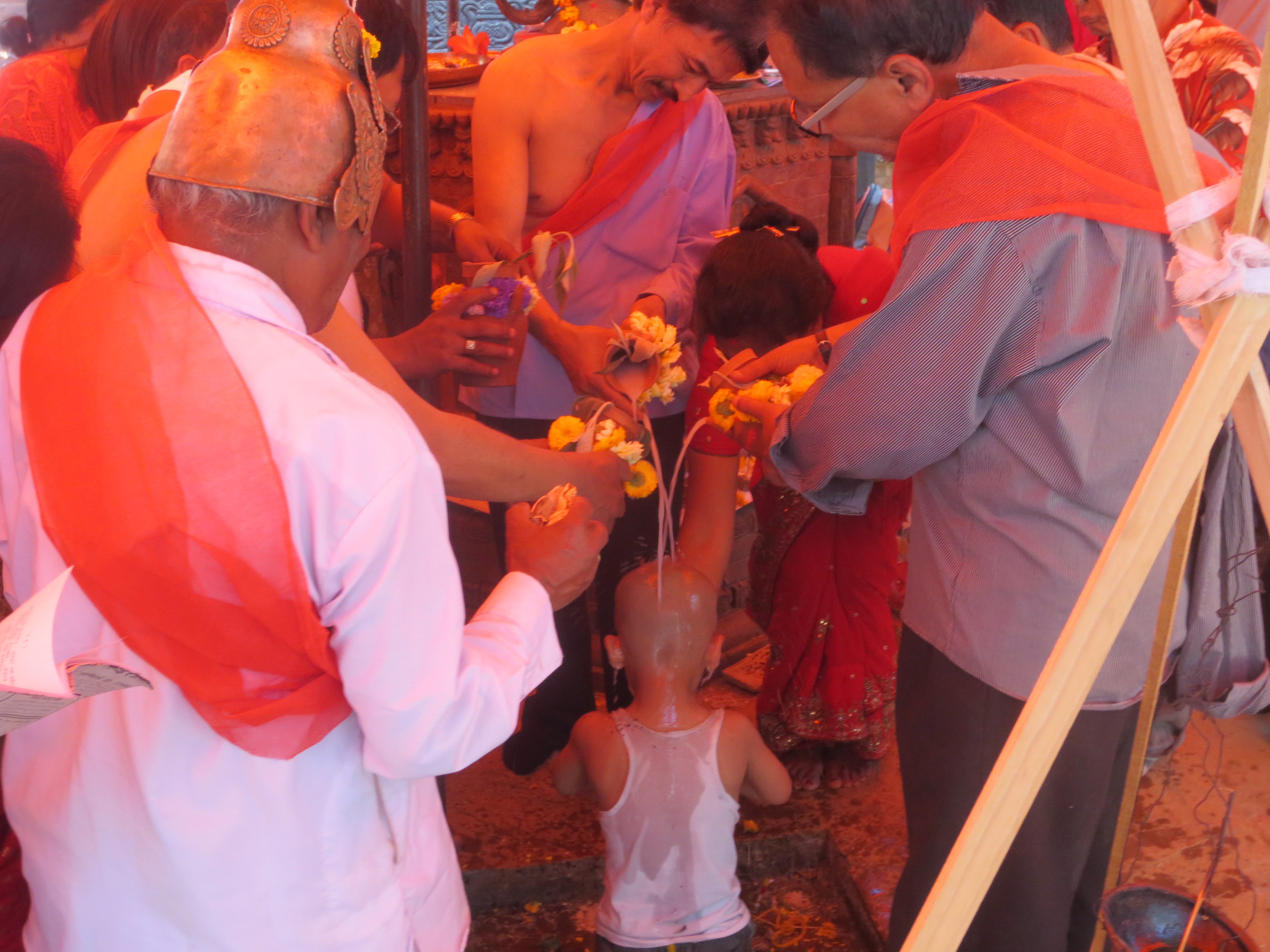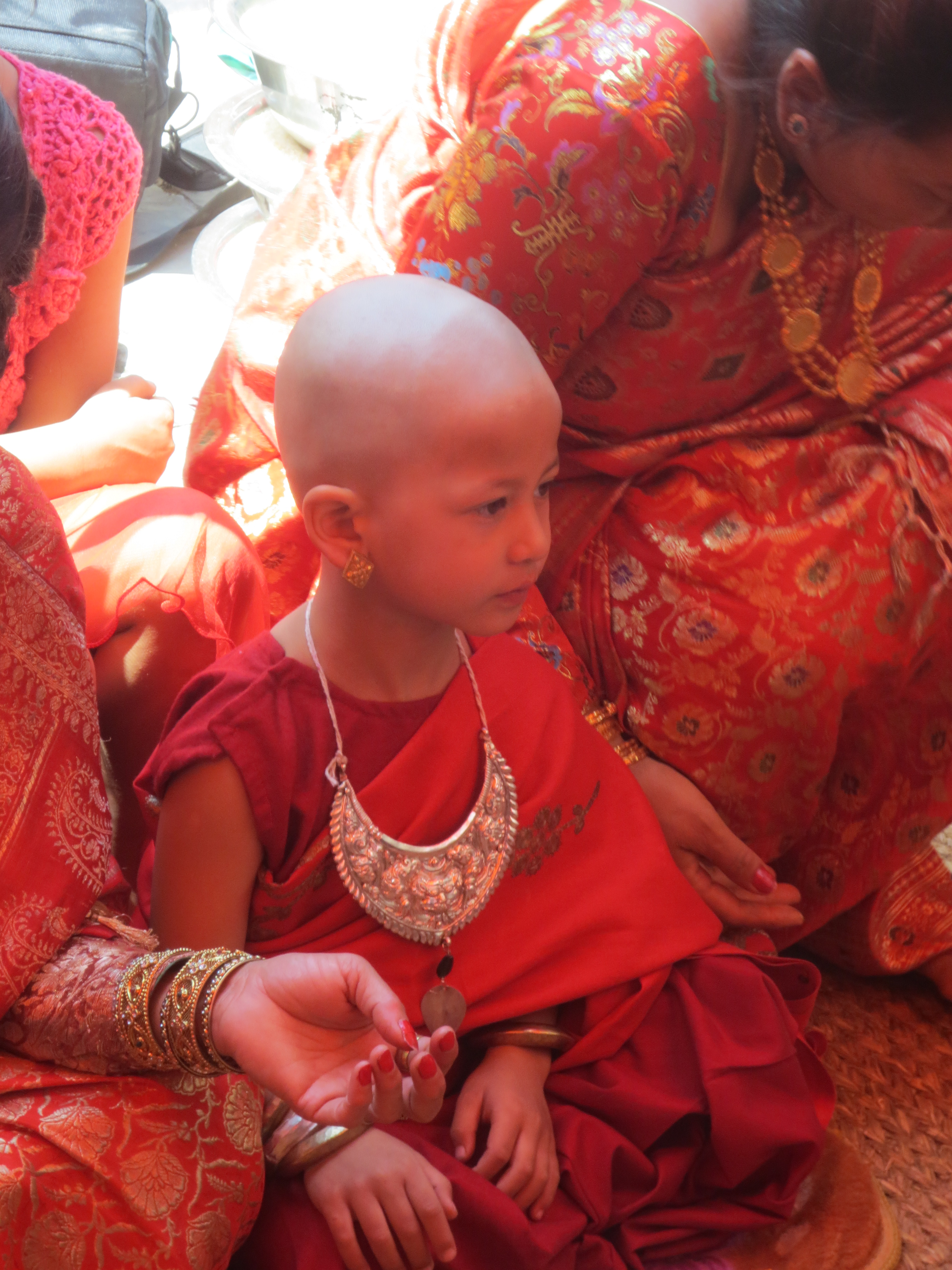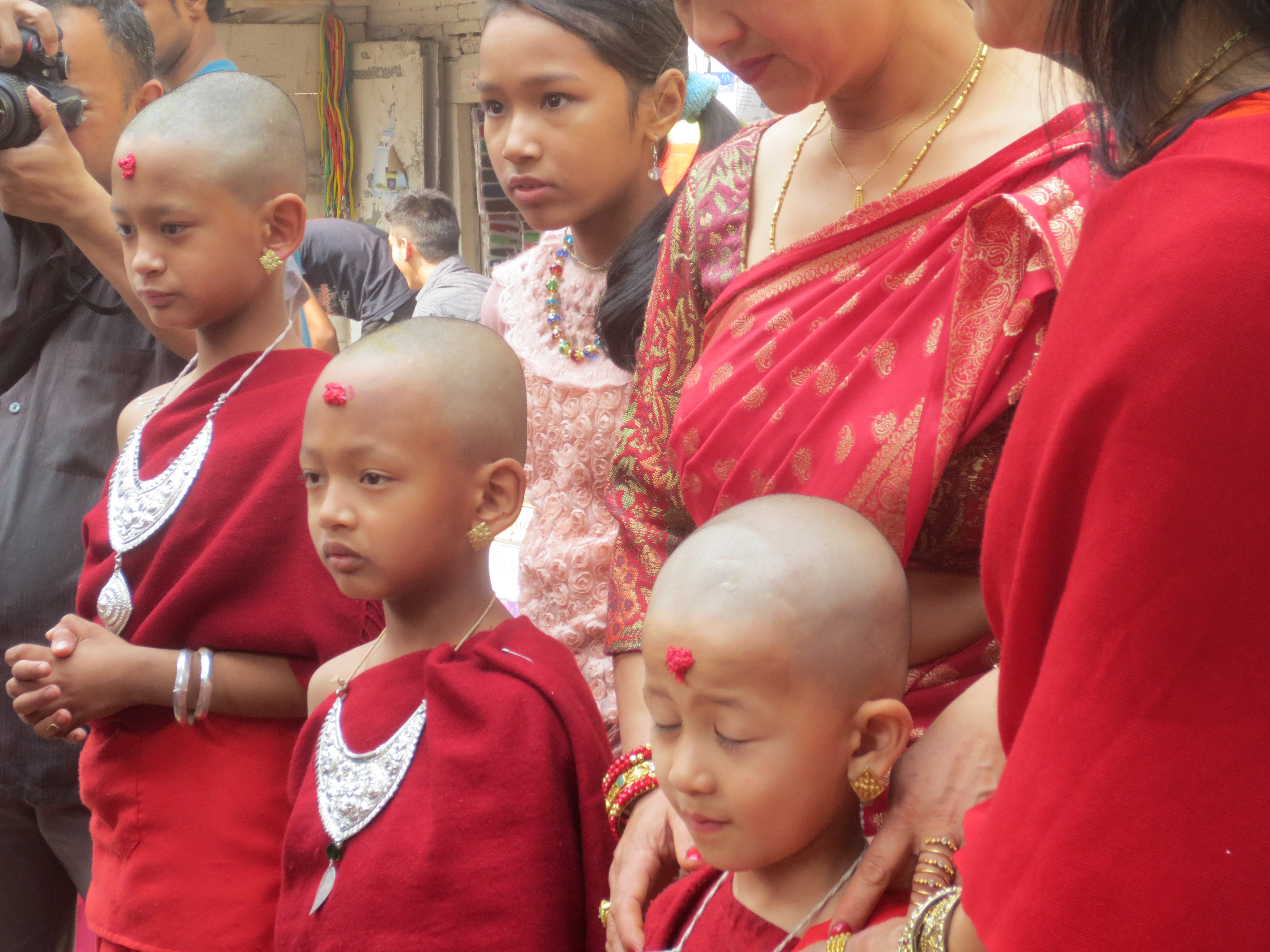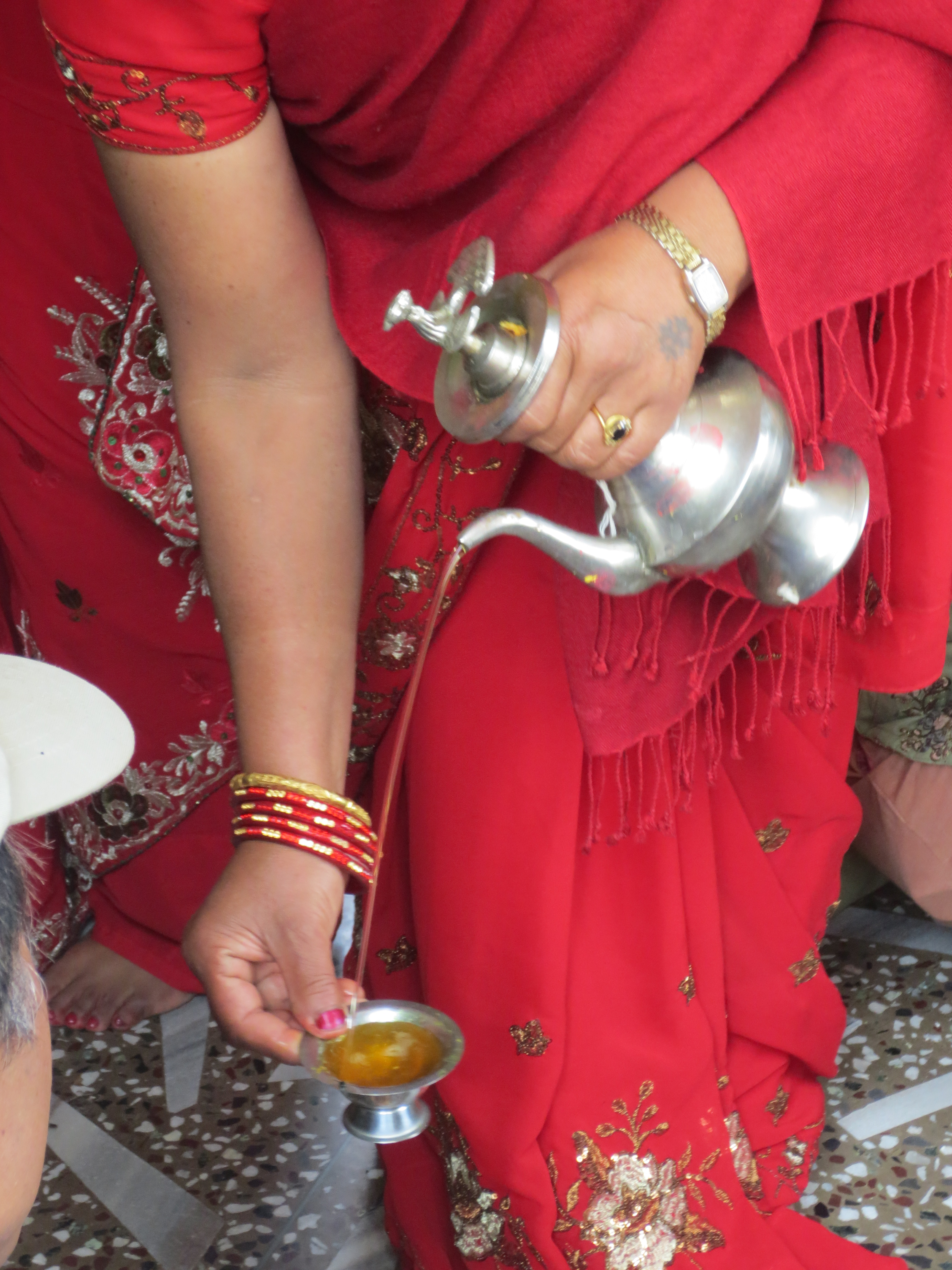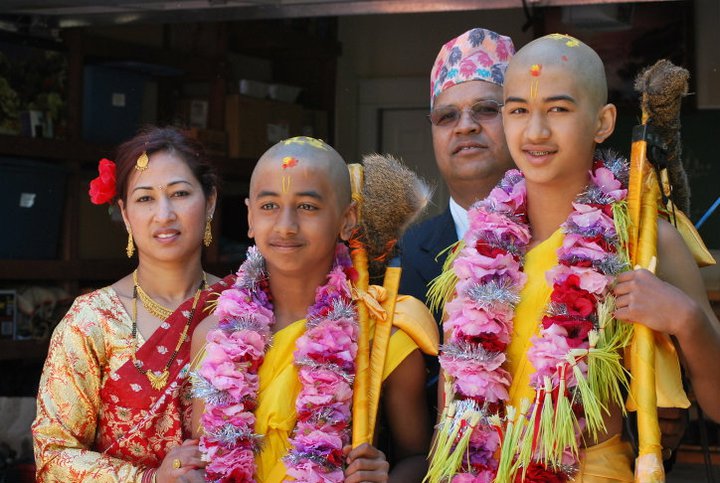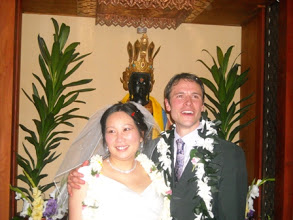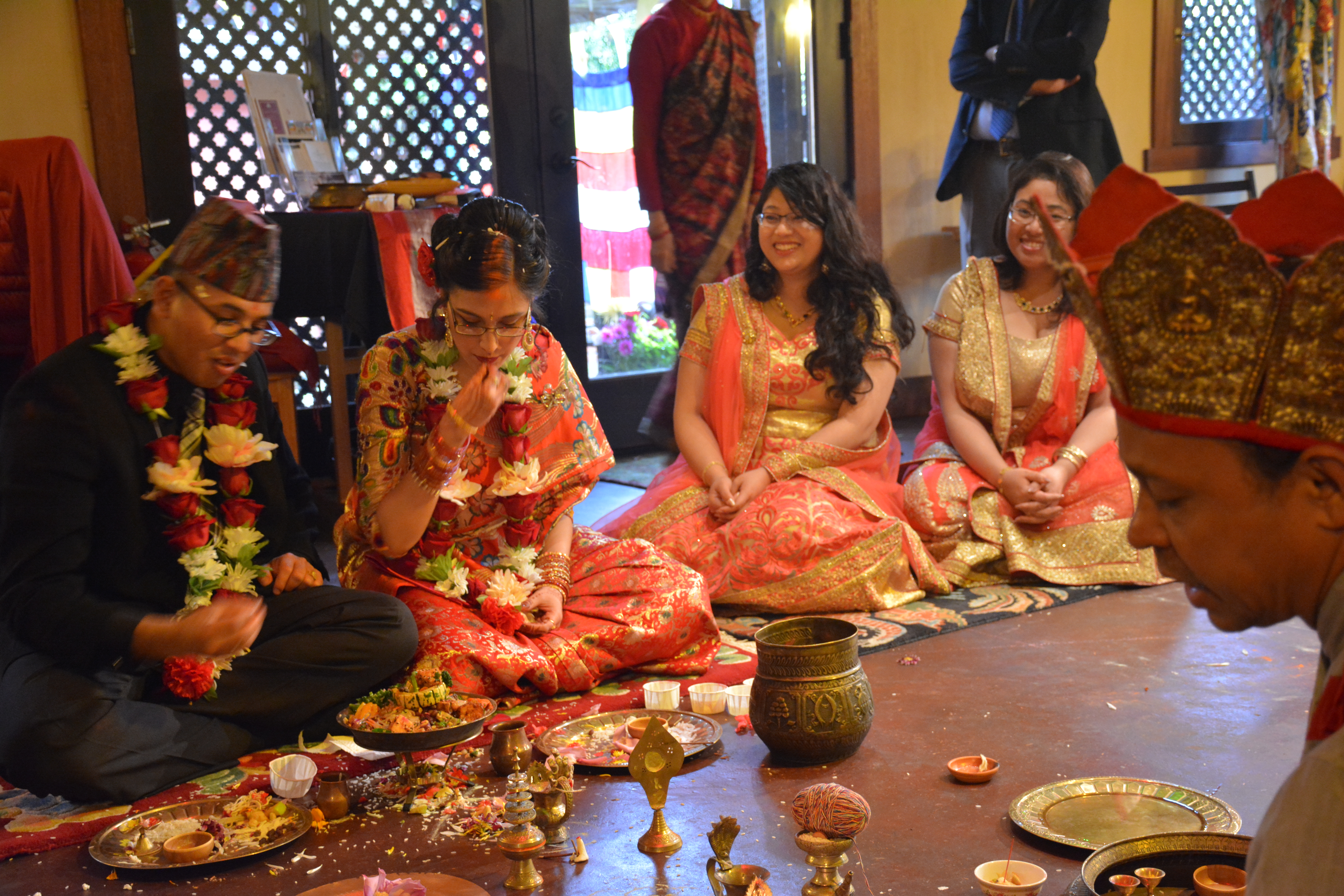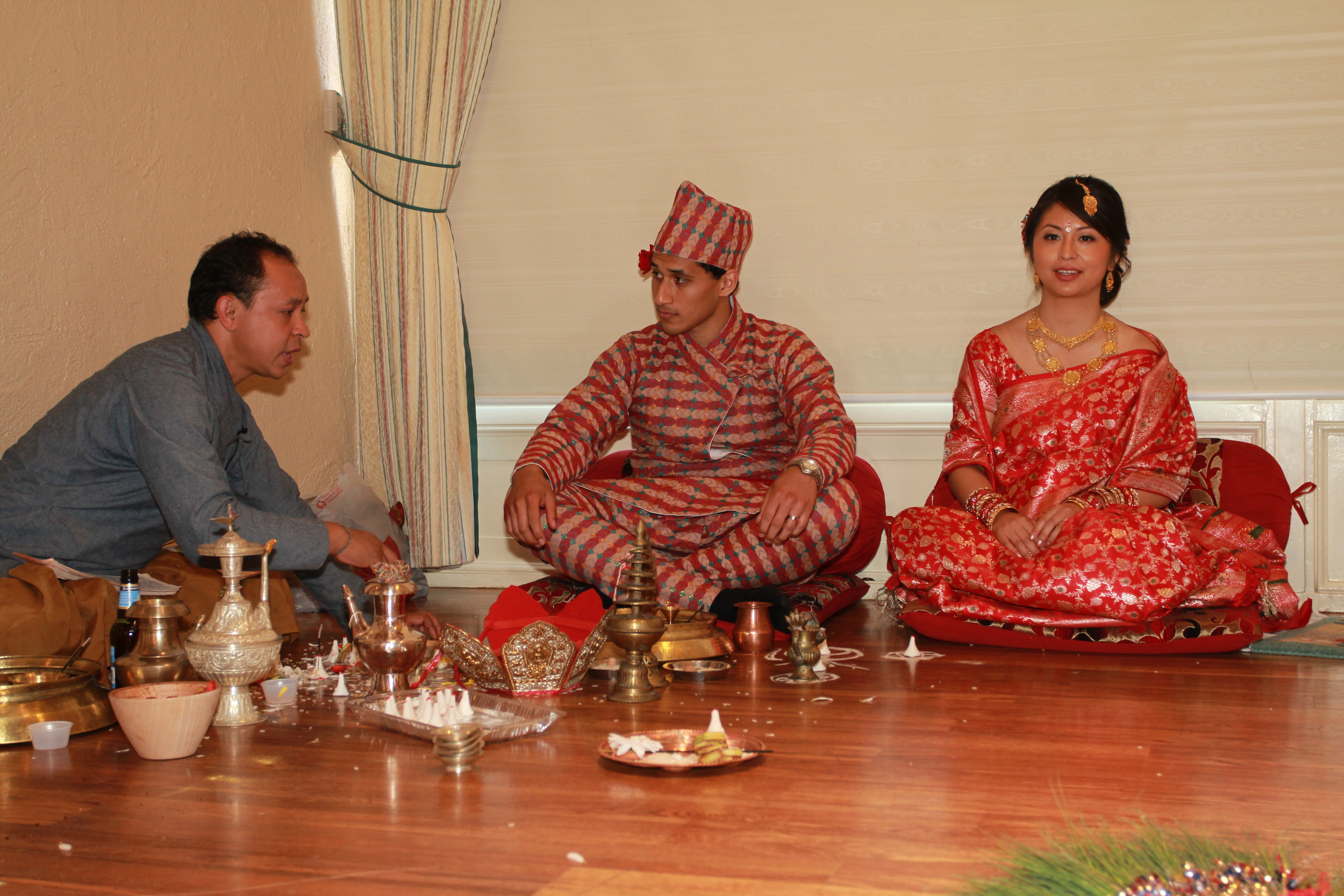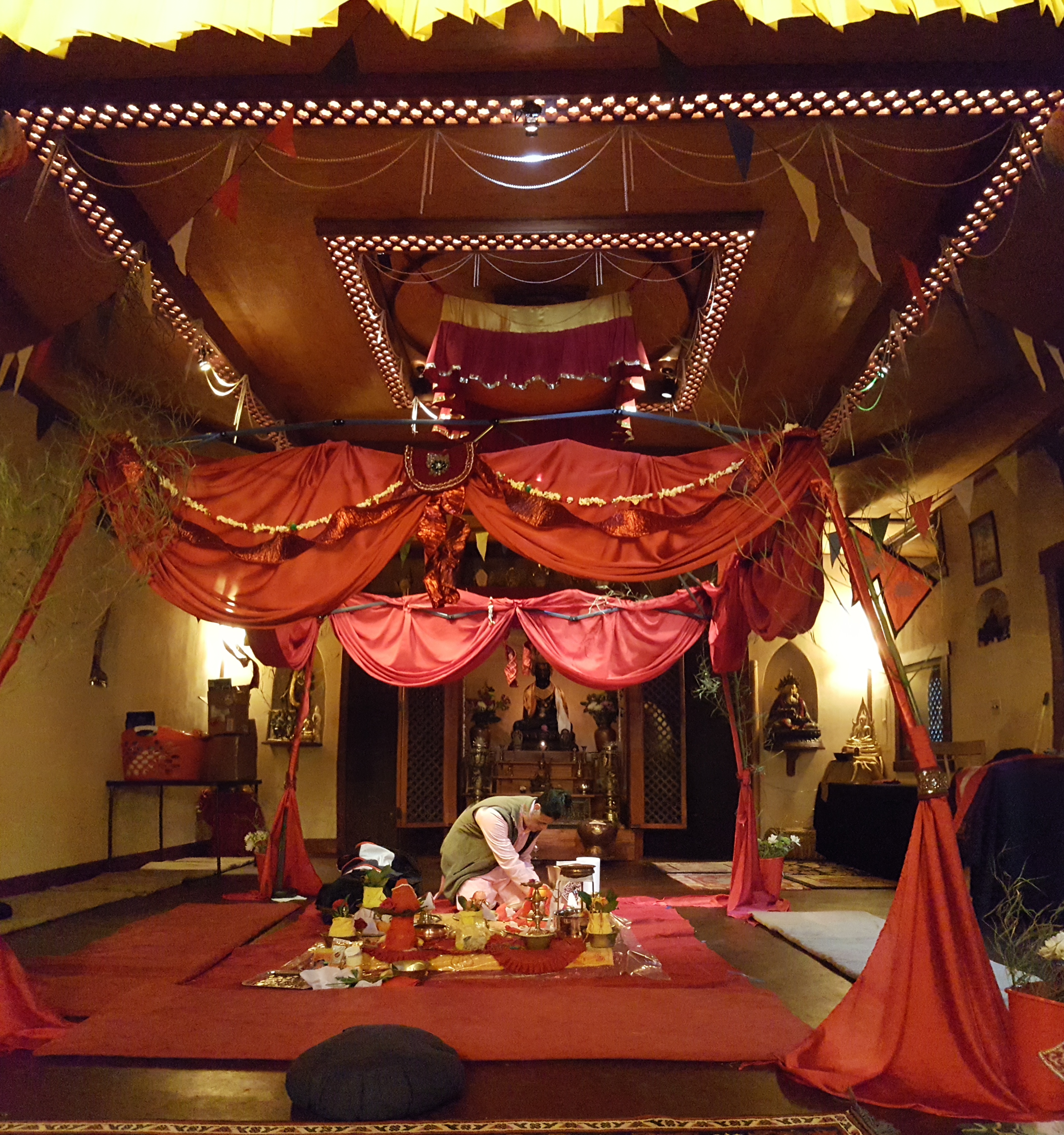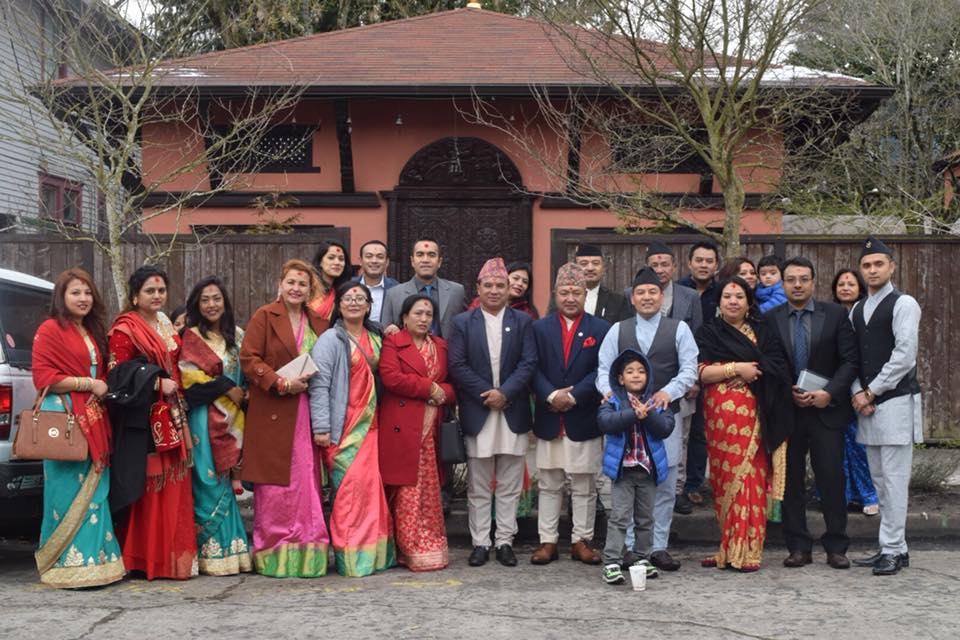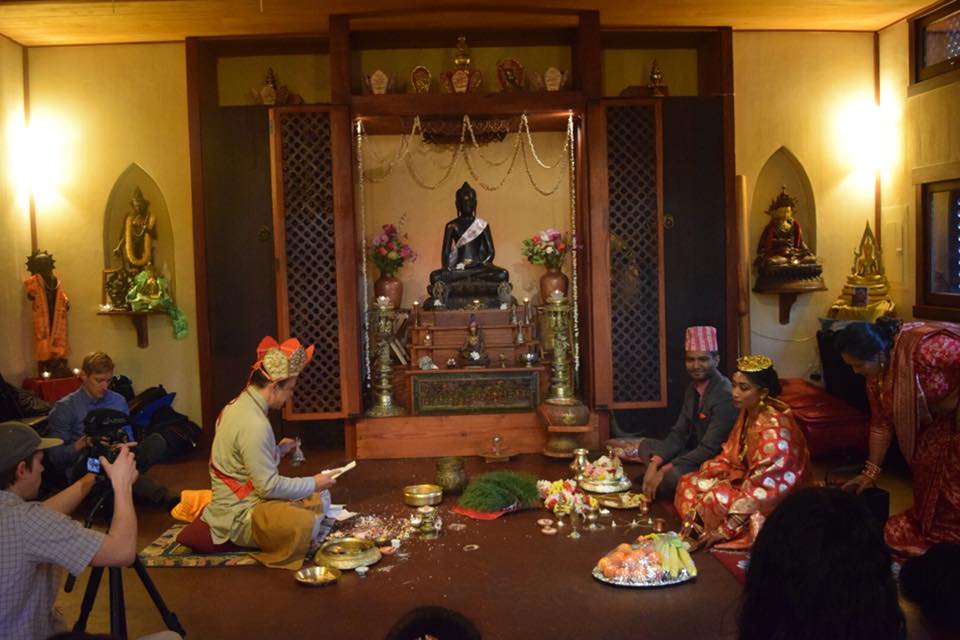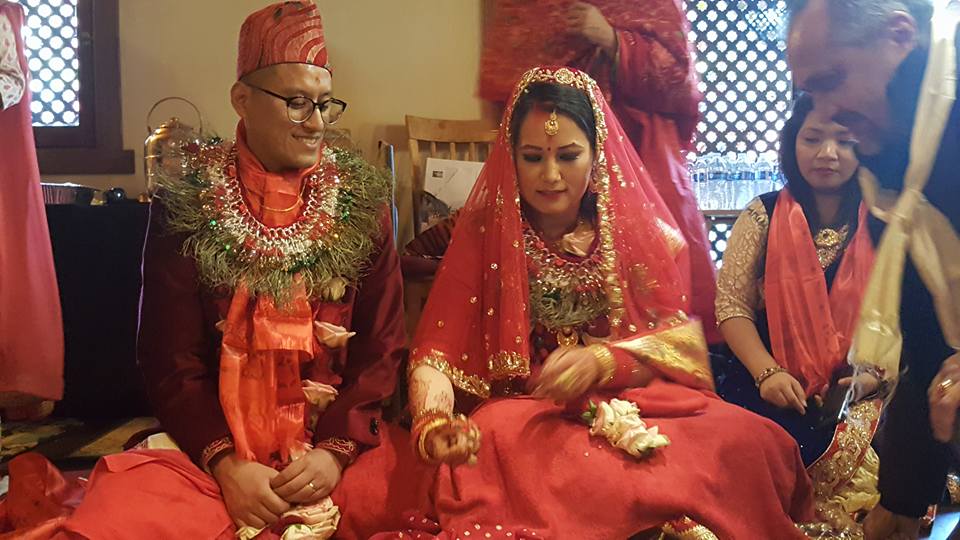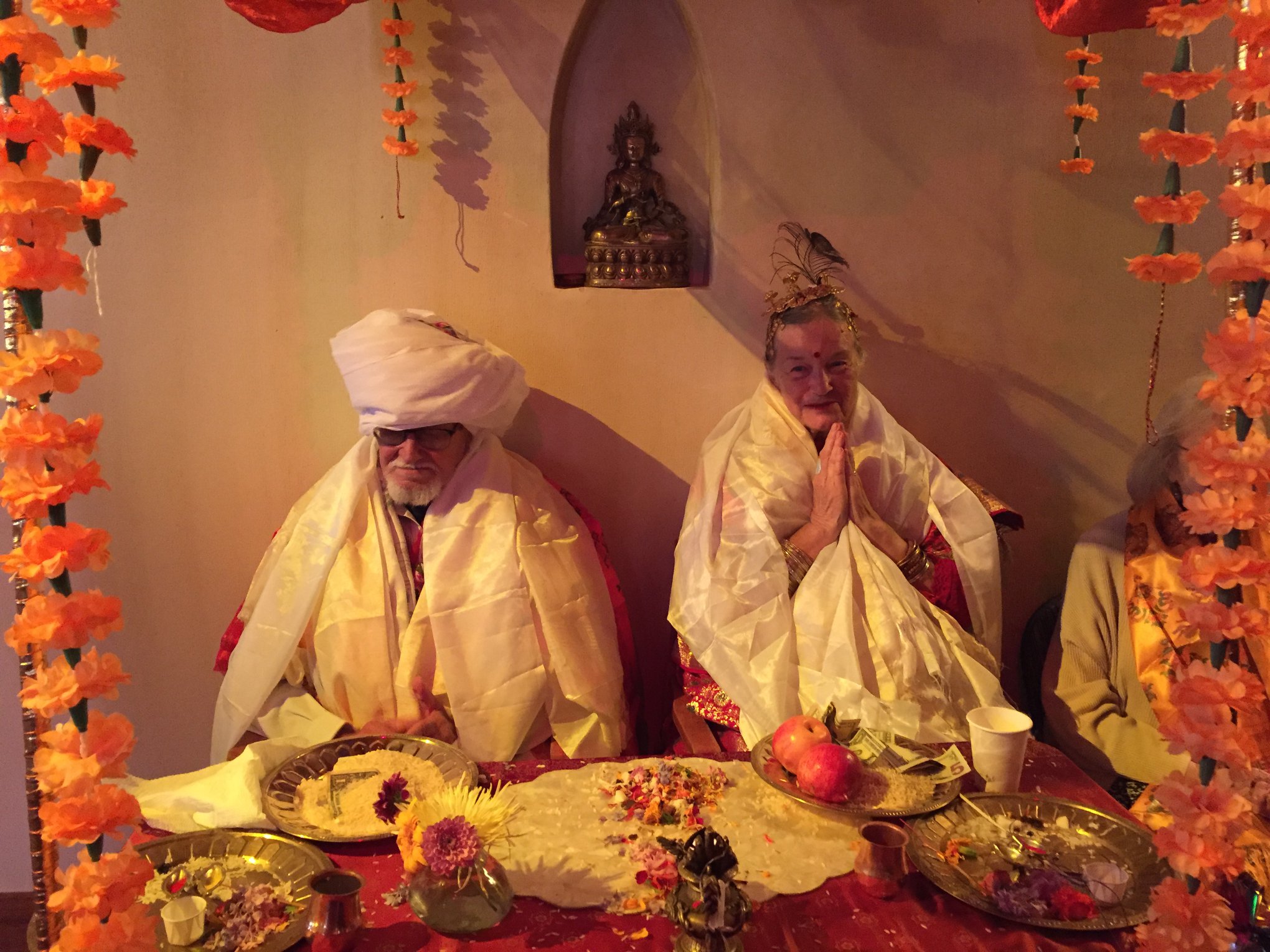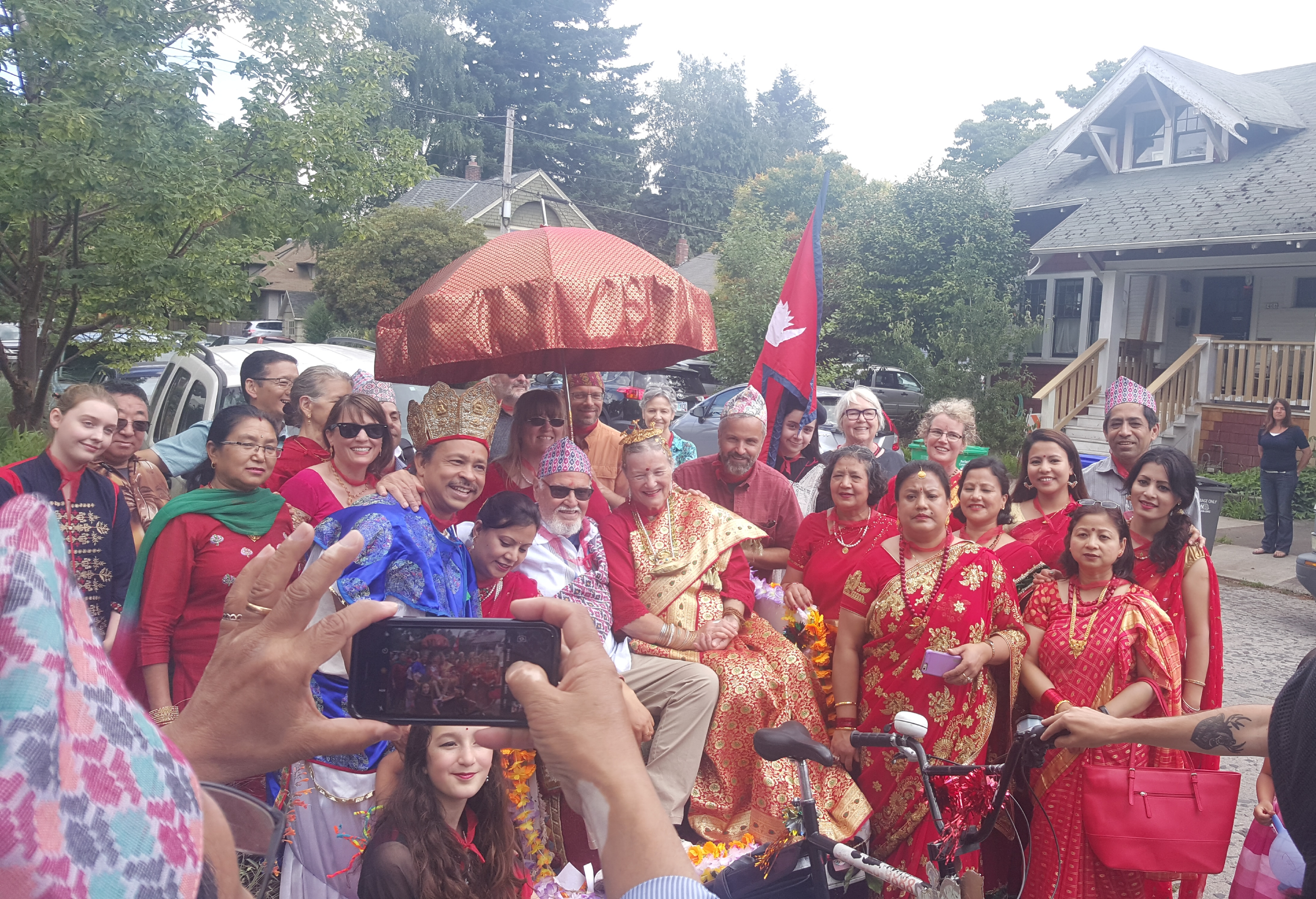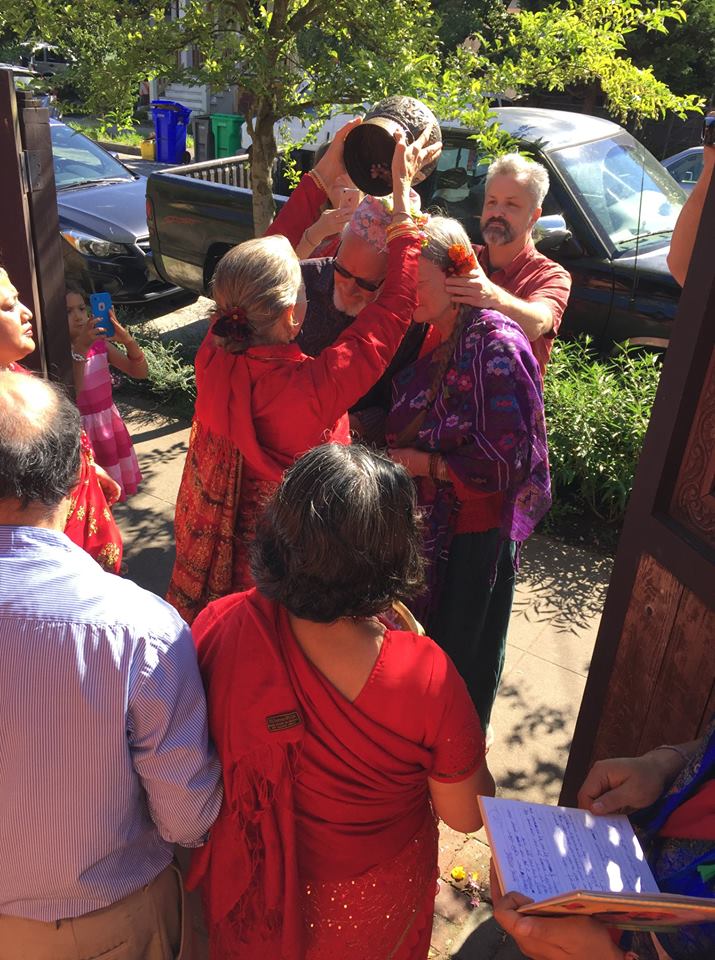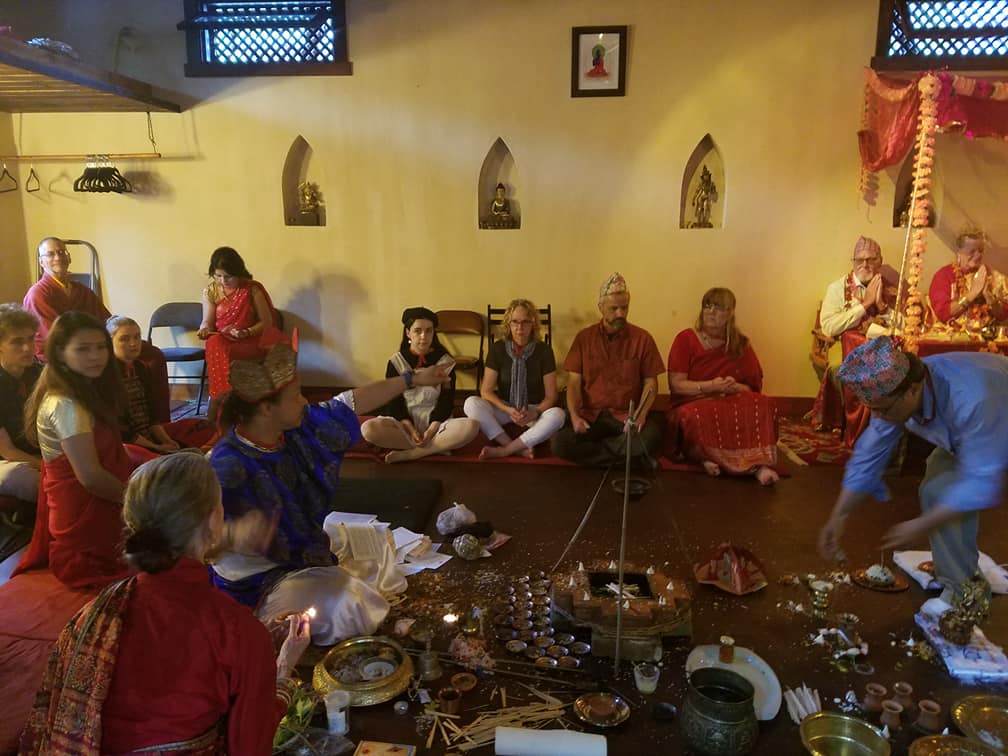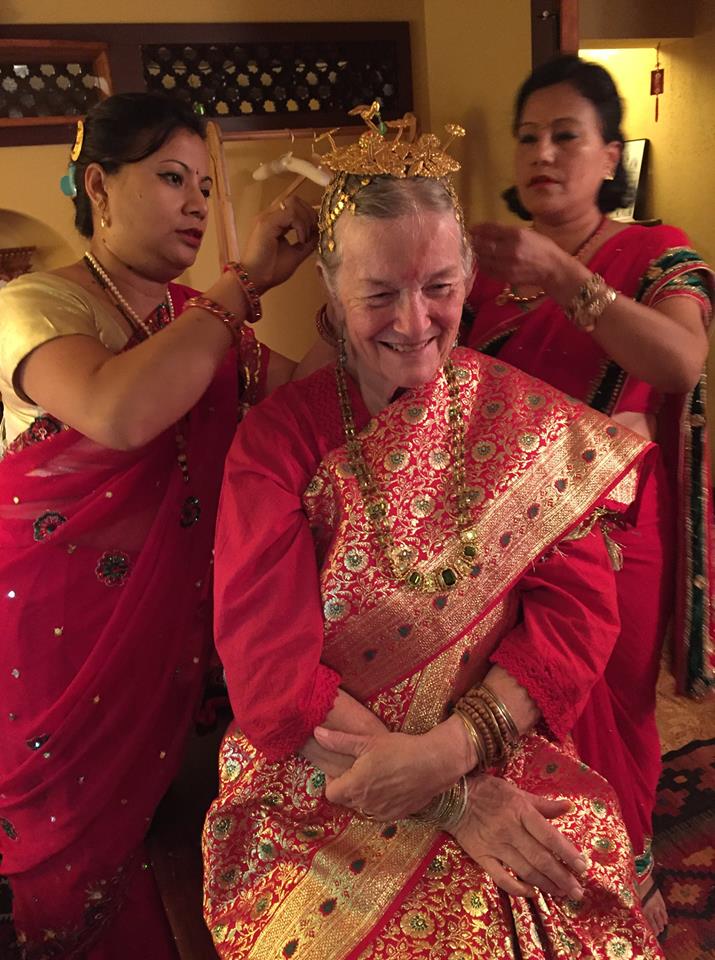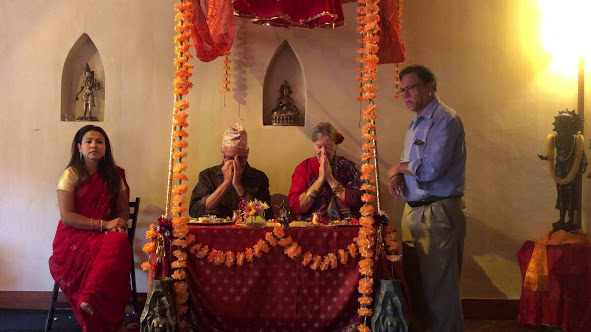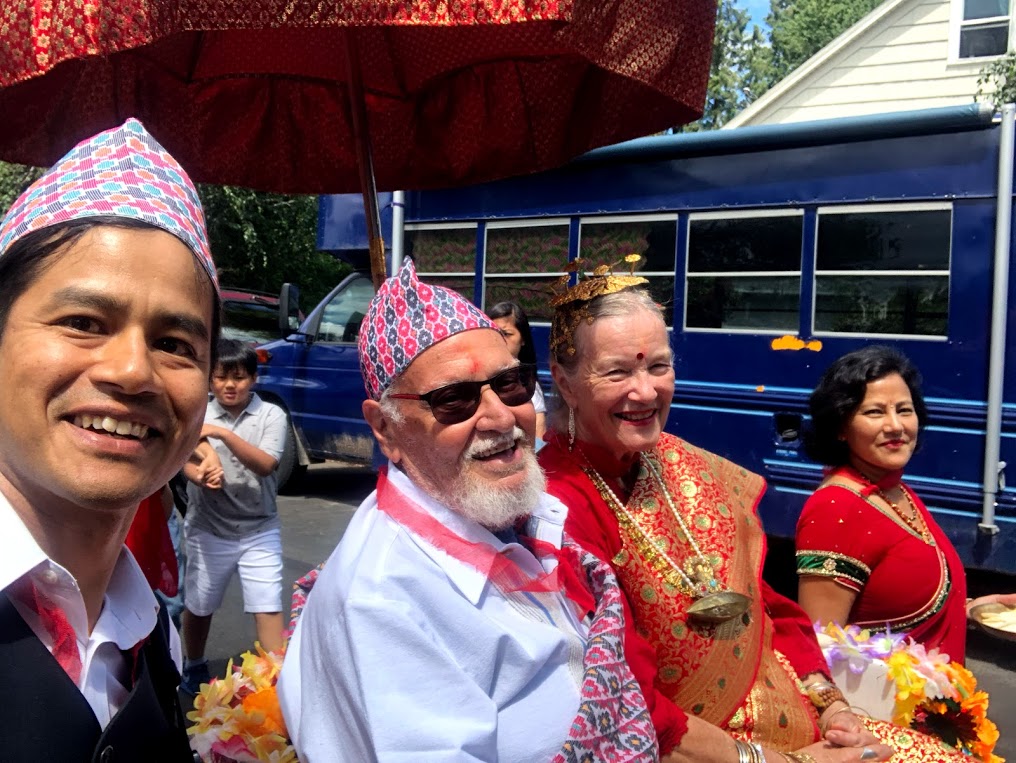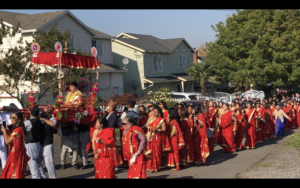Life Cycle Ritual Offerings
BLESSING CEREMONY FOR BABIES (ANAPASANA)(MACHA JANKO)
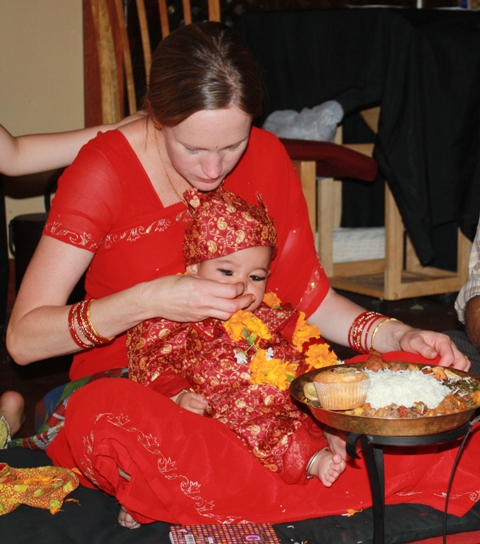 The Rice Feeding Ceremony is a celebration in Nepal in which a child is first fed rice. Although centuries old tradition, modern science has established the fact that child’s digestive system is capable of processing solid food when they are approximately six months old which is why anapasana is held for when a baby turns six months old but it can vary between daughters and sons.This ceremony is held at five months for daughters, and six months for sons. An auspicious date and time is chosen by an astrologer,special costumes are worn during ceremonies .
The Rice Feeding Ceremony is a celebration in Nepal in which a child is first fed rice. Although centuries old tradition, modern science has established the fact that child’s digestive system is capable of processing solid food when they are approximately six months old which is why anapasana is held for when a baby turns six months old but it can vary between daughters and sons.This ceremony is held at five months for daughters, and six months for sons. An auspicious date and time is chosen by an astrologer,special costumes are worn during ceremonies .
PURIFICATION RITUAL (MHAPUJA)
For Body, Speech, and Mind – This ritual is based on a tradition that has been carried down for centuries by Buddhist priests of Nepal. The ritual includes explanation of the five elements (earth, air, fire, water, and space) in one’s being, purifying with the 5 elements, and the body as a mandala. Participants are then guided to perform the ritual for self-purification.
IHI PUJA (Bel Bibaha) -Newar ceremony for girls under 12 years old
This ritual has been in practice since hundreds of years. The Ihi (pronounced Ehee) Ceremony is an important part of the Nepalese tradition where the young pre-adolescent girls are married (make a commitment) to the Bel fruit (wood apple). The Bel fruit has a peculiar quality of remaining fresh forever and healthy and long lasting . Wood Apple tree is bring conscious mind.
Bahra Tayagu(Gupha Rakhne)
Ihi needs to be completed before this ritual. Generally accepted age is 5, 7, 9, 11, and 13 year old. The first day of the ceremony starts with a usual puja conducted either by the eldest woman of the lineage or the priest. A doll representing the bahra Khaya, the cave ghost, is prepared and put at one corner of the room.
CHUDAKARMA Ceremony (चुडाकर्म ) (Bare Chuyegu/Acharyabhisheka
For Shakya and Vajracharya Boys
Once such important rite of passage ceremony among the male Newars is performing the loin-cloth and head-shaving ceremony called Chudākarma (चुडाकर्म) which is traditionally performed for boys aged five to thirteen according to the religious affiliation Newars identify with.
In this ceremony, Buddhist Newars – Gubhāju-Baré (Vajracharya-Shakya), Chudākarma ceremony by mimicking Buddha’s ascetic and mendicant lifestyle and the steps to attain monkhood and waking where the boy stays in a Buddhist monastery Vihara for three days, living the life of a monk and abandoning all material pleasures. On the fourth day, he disrobes and returns to his family and henceforth becomes a householder Buddhist for the rest of his life. The Buddhist priestly clan Gubhāju-Baré (Vajracharya and Shakya) go through an additional initiation ceremony called Bare Chuyegu (becoming a Baré) while Vajracharya boys are further required to go through Acharyabhisheka (Sankrit आचार्याभिषेक) which is a Tantric initiation rite that qualifies a Vajracharya to perform as a purohi.
BRATA BANDHA (KETA PUJA) – Newar Ceremony for Boys under 12 year old
Sanskrit brata = promise, bandha = to be bound. This Sanskara (rite of passage) involves elaborate Karma Kanda which involves the participation of entire family and a guru (teacher) who then accepts the boy as a disciple in the guru-shishya tradition in Nepal. Traditionally these boys were sent to gurus to learn in a gurukul system of education but in modern times this act of the boy doing for first alms round in town and leaving his family for guru’s hermitage is done symbolically within the family and is later is stopped by his maternal uncle (Mama)(Pau) from leaving
NAVA GRAHA PUJA (Remove the Obstacles) People use for Birthday Celebration
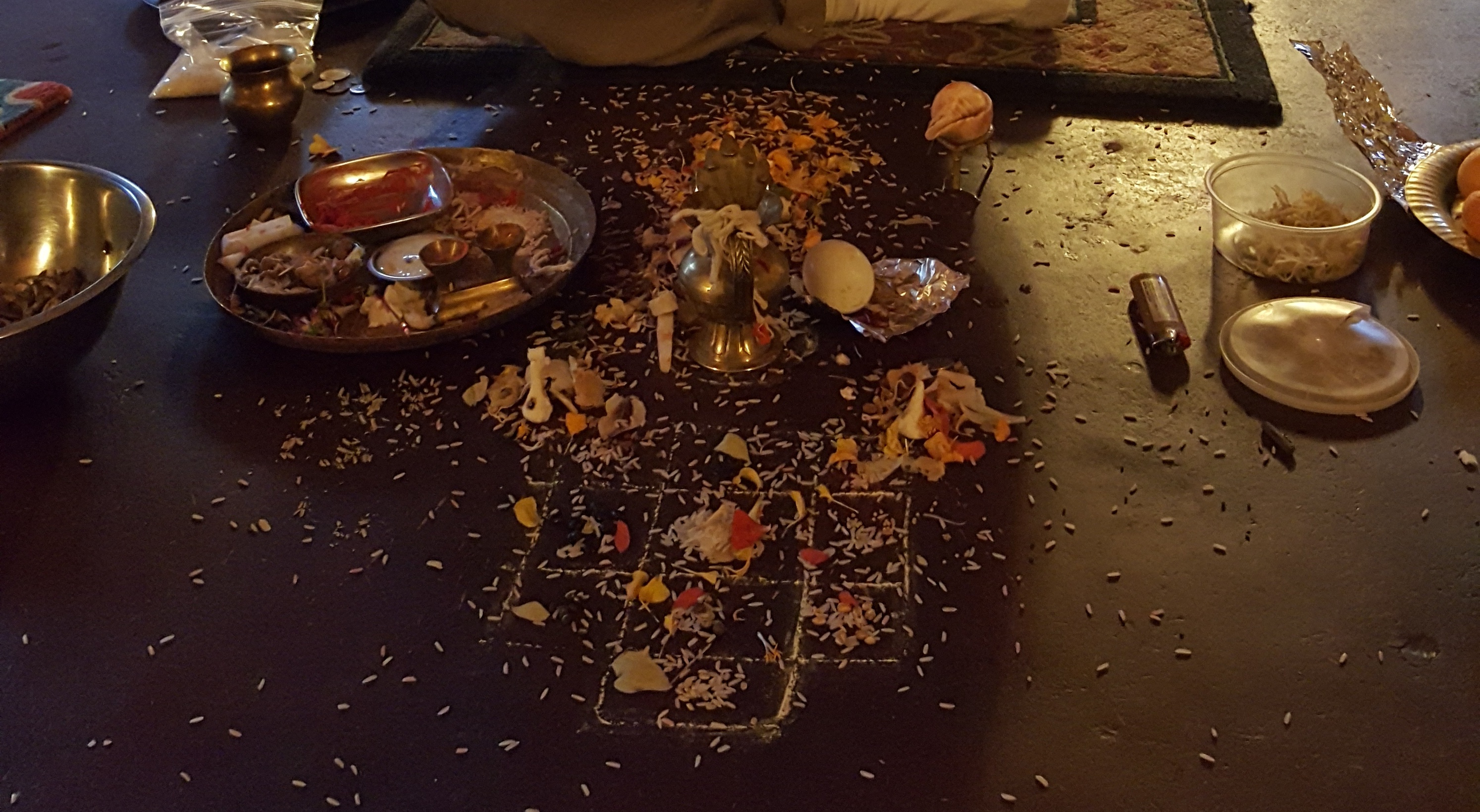 Puja will be done with right vidhi vidhan through experienced priest. Nava means “Nine” and Graha means “Planets“. In Nepalese astrology there are nine planets that have influence on the life.The planets can effect various aspects of life such as relationships, health, business, careers, finance, and marriage. Every life as has its ups and downs, and they are affected by the planets. Planets in the horoscope have confgurations which can create obstacles in life, called Nava graha Dasa. Though the planets have their effects—these malefic dasas or negative effects can be minimized by doing the Nava Graha Puja (worship of the 9 planets)
Puja will be done with right vidhi vidhan through experienced priest. Nava means “Nine” and Graha means “Planets“. In Nepalese astrology there are nine planets that have influence on the life.The planets can effect various aspects of life such as relationships, health, business, careers, finance, and marriage. Every life as has its ups and downs, and they are affected by the planets. Planets in the horoscope have confgurations which can create obstacles in life, called Nava graha Dasa. Though the planets have their effects—these malefic dasas or negative effects can be minimized by doing the Nava Graha Puja (worship of the 9 planets)
Traditionally down on an individual’s Birthday
Navagraha are Ketu, Venus, Sun, Moon, Mars, Rahu, Jupiter,Saturn and Mercury
HOUSE BLESSING AND PURIFICATION
In  the Buddhist tradition, a house blessing is conducted always before people move into a new house after construction is finished, or a house is purchased. It will be done after purchase, before moving in. This blessing is performed by a Buddhist priest and varies greatly throughout Nepal. The traditional house blessing is the chanting of mantras, performing ritual in 8 direction of the house and each door will be protracted by the Mantras.
the Buddhist tradition, a house blessing is conducted always before people move into a new house after construction is finished, or a house is purchased. It will be done after purchase, before moving in. This blessing is performed by a Buddhist priest and varies greatly throughout Nepal. The traditional house blessing is the chanting of mantras, performing ritual in 8 direction of the house and each door will be protracted by the Mantras.
LONG LIFE PUJA
Saptavidhānuttarapūjā,
Seven Limbs of Most Excellent Ritual. The elements of the offering are 1. vandanā: Bowing Down 2. pūjana: Making Offerings 3. Desana: Confession of Sins. 4. modana : Rejoicing in Merit 5. adhyeṣaṇa: Requesting the Teaching, 6. yācana: Entreating the Buddha to Remain in the World for Aeons and 7. nāmana: Dedication of Merits. The ritual preparation involves many objects including the arrangement of 108 butter lamps,108 water bowls,108 tormas (miniature stupas) and 108 gulupa or begging bowls.
LONG LIFE CHANTING
Namasangiti chant
pancharachhaya path(chant)
HOMA PUJA(fire Ritual)
 In the Vajrayana tradition, Homa rituals have been performed for thousands of years. This ritual is done for empowerment, consecration of stupas, temples, and to help for well- being. Homa is performed in a receptacle in which a fireplace is made with raw bricks. The Homa fireplace should be decorated with colorful flowers, leaves, grains, and beans.
In the Vajrayana tradition, Homa rituals have been performed for thousands of years. This ritual is done for empowerment, consecration of stupas, temples, and to help for well- being. Homa is performed in a receptacle in which a fireplace is made with raw bricks. The Homa fireplace should be decorated with colorful flowers, leaves, grains, and beans.
The thirty-two herbs and grains used to purify the atmosphere make the smell very good. During the ceremony the priest adds incense, ghee, raw sugar & honey etc. as herbs. When the Homa is performed, the chemicals in the herbs are burnt and get converted into gaseous form which mix in the atmosphere, entering the breath and the body chemistry of the one doing the Homa and those who are in the vicinity. These chemicals go to inside the human organism, making it healthy and purifying bad energy.
CONSECRATION
This is usually done to purify the masks, statues, stupas, thankas, altars, vessels & any holy objects. The ritual gives life, rebirth, or is simply done to renew the purity of the holy objects.
Here are the steps for your wedding.
Agenda:
1) Staphana Pooja: Establishment. Priest establishes ritual materials and objects and purifies them. He purifies his own body mind, and speech.
2) Gurumandala Pooja: Purification. Bride and Groom enter the ritual space and Priest guides them through a symbolic purification of their body, mind, and speech.
3) Jola Naykan Shinamoo: Mirror Reflection. Priest reflects the good energy created during the ritual, to Bride and Groom and to All Sentient Beings. 4) Kisli: Rice, Coins, and Betel Nuts. Bride and Groom pray for good health and long life together5)Tikka: Yogurt, Rice, and Red Powder. Priest gives a blessing to Bride and Groom6) Swayambar: Marriage (a) Bride circles groom 3x and places a flower garland over his head. Groom circles bride 3x and places a flower garland over her head. The circling binds their energies together.(b) Bride and groom exchange jewelry, including wedding rings. (c) Say and share by Bride and Groom. (There is no time limit and the content is up to you.) (d) Shindur Laguene: Putting Red Powder. Groom puts Abir on Bride’s head. The red color symbolizes a promise as deep as bloom (e) Kanyadan: My Daughter is your Daughter. The bride’s parents give their daughter to the groom.
Stuff needed: Karuwa, gwaya, pan, money, and parents of Bride and Groom
7) Gwaya Sayake: Sharing Betel Nuts. The Groom’s family welcomes the Bride and introduces their family for life-long relationship
8) Dhauo Saga: Blessing withYogurt. Priest gives for blessing for happiness and joy to the Bride, Groom, and all family members
9) Shiffala Lukegu: Head Bang. Groom’s Father puts the heads of the Bride and Groom together and Groom’s Mother pours rice, flowers, and fruits over their heads.
10) KhenSagan: Wine, Fish, Egg. The Bride and Groom and their families eat of the whole universe.
Buda Budhi Janko (Bhima-Ratharahana Puja)
When a man or woman turns 77 years, 7 months, 7 days, and 7 hours, there is a special ceremony to perform . The celebration may als0 be held for a couple when either the husband or wife reaches that age. The Bhimaratha observance calls on the goddess of long life, Usnisavijaya, to purify karma and bestow the blessings of good health and a long life span.
At the culmination of the Bhimaratha festivities, the honored person or couple dressed in brocade raiment is paraded through the streets in a chariot (ratha) drawn by their children and grandchildren and feted with music, flowers, blessed water, vermilion powder, and incense. The honorees’ ears are pierced for a second time, and their youngest grandchild places new silver earnings in their ears. Henceforth, they are released from religious and ritual obligations, for their sins have been remitted and their karma purified.
The honored individual or couple ride a chariot drawn by flying horses, the magical steeds that will transport them to paradise or to nirvana, the afterlife destinations secured by the Bhimaratha ceremony. The Newar priest overseeing the ceremony seals the blessings by performing a homa puja.
https://www.facebook.com/nitup/videos/10155368976280824/UzpfSTE0MDMwNzkwNzk6MTAyMTI3ODQ2NDQ3MTY2MjM/
*
Rituals can be performed at the Portland Temple or at another location. Reservations are required for all rituals prior to ritual preparation. Contact Prajwal for reservations or more information.

